London has gained a new museum that shows off a large, and until now, largely hidden section of Roman wall, and the history of the local area where it was found.
The Roman wall was built around the ancient city to replace an earlier wooden wall, and was later often reinforced to increase its protective capabilities. Over the centuries, the wall sank from view as it was often used as the back wall for buildings, and slowly literally sank into the ground as London built upwards.
This section of wall had long been buried until it was discovered in 1905 when an office block was built on the site. The wall was preserved in the basement, but save for rare opportunities to go inside, the only way to see it was to stand outside and peer through often dirty windows in the floor.
Until now that is.
That older building and the 1970s building next to it have been demolished and replaced, and as part of the planning approval, the Roman wall has to be open to the public. And to their credit, rather than making it available, but hope no one would ask, they’ve created an entire museum instead, the City Wall at Vine Street Museum.
Although the huge slab of Roman wall is the star of the show, there’s a lot more to see here as the side of the room has been filled with artefacts from the local area that have been uncovered over the decades by archaeologists. They’re now on display, many for the first time.
What’s really clever though about the Roman wall display is that they haven’t tried to prettify the display or remove the later changes, so we see its entire history from 190AD to the 1970s
The black brickwork was added in 1905, while the red jacks underneath were added to support the wall while the modern office block around it was being built. There are now steel props holding the wall in place, so the red jacks could be removed, but I like that they are still there. They add an industrial character to the display.
The bulk of the wall is made of Kentish ragstone, and you can see the classic red tiles that were inserted into Roman walls to give them added strength. There are some holes cut into the wall that are described as being cut later to let people see the wall as it was slowly submerged by later buildings and warehouses. A small section of Roman tiled floor has survived, and off to one side, you can see more modern brickwork that’s been embedded into the Roman wall.
One of the joys of the way that London’s Roman wall was reused over the centuries is that when they are uncovered, they often carry an imprint of the centuries of different uses it was put to long after the Romans left.
You are so far standing inside Roman London, so go around the other side to stand outside London, and here’s the only known surviving Roman bastion. Well, the foundations of it, as the rest have long since been lost. They note that this is the only Roman-era bastion that can be seen in London, as the one next to the former Museum of London that people think is Roman is in fact medieval, as is the one in the basement of the Merrill Lynch Financial Centre.
So far so good, but there’s also a lot of heritage on display along the walls, showing off the history of the local area, and the many trades that they discovered working here.
Unsurprisingly, there are a lot of fragments of pots and later, of bottles, but they are brought to life by the captions that tell their story, especially the chamber pots used before modern plumbing.
I was particularly taken by the fragment of German jug imported into London around 400 years ago, with images of dancing villagers on it, mainly as it reminded me of the Dancing Mania that was sweeping mainland Europe at the time, for reasons which are still unclear.
Some of the pots show how they’ve been reassembled, and if you peer inside you can still see the curator’s record marks on each shard of pottery from before they were put back together again. It’s a small thing, but something you don’t often see.
Two more cases show off objects thought to be associated with two named individuals who lived here, and do be very careful when reading the captions as there’s a caption about bones from a cat, and I assumed the skeleton was the cat. Nope, it’s a rabbit. I should have read a bit further on.
Overall, it’s an impressive collection to look at in its own right, but sitting in a basement space dominated by the huge slice of exposed Roman wall, this is an exciting new museum that London has gained.
And free of charge.
The City Wall at Vine Street museum is open every day other than bank holidays and is free to visit. You need to book a free ticket in advance, and they’re fairly relaxed in timings, being morning, lunchtime or afternoon, so you can be flexible about when you arrive.
The entrance is on Jewry Street, a short walk from Aldgate or Tower Hill tube stations or Fenchurch Street railway station.
At the time of writing, it’s in its soft-launch phase, so there are a few more items to arrive later, but as it’s free you can go back again and see what’s changed.

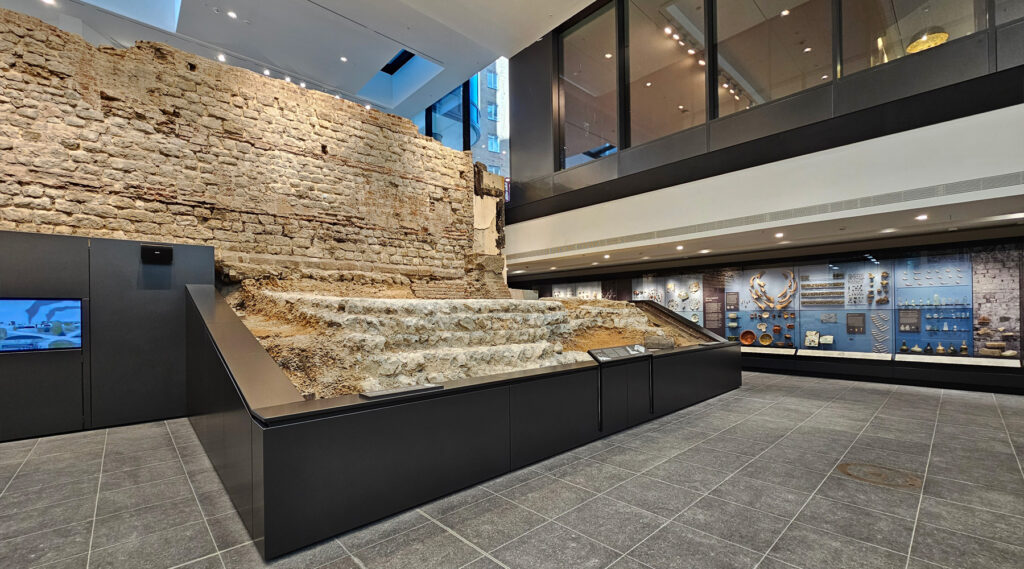
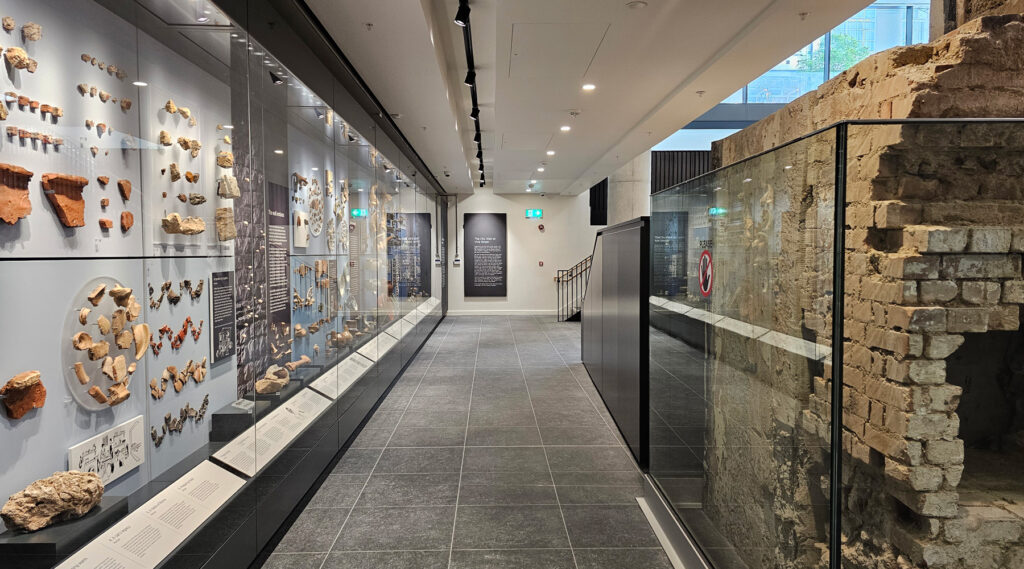
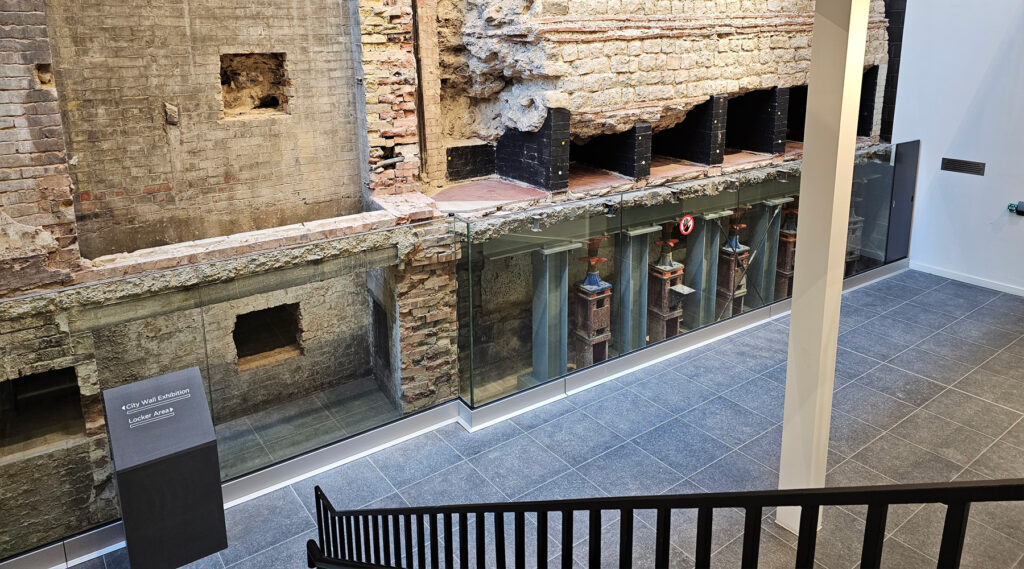
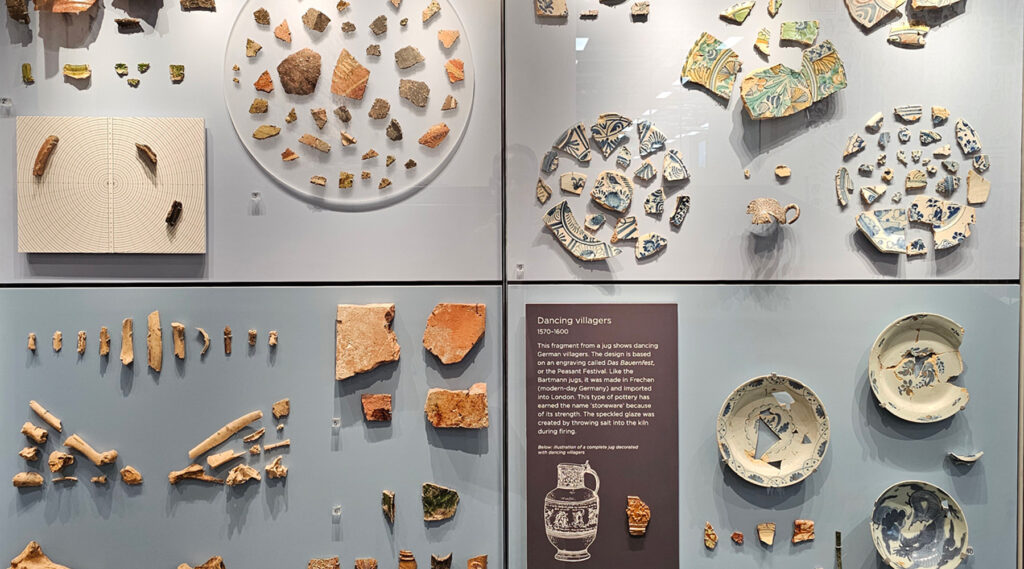
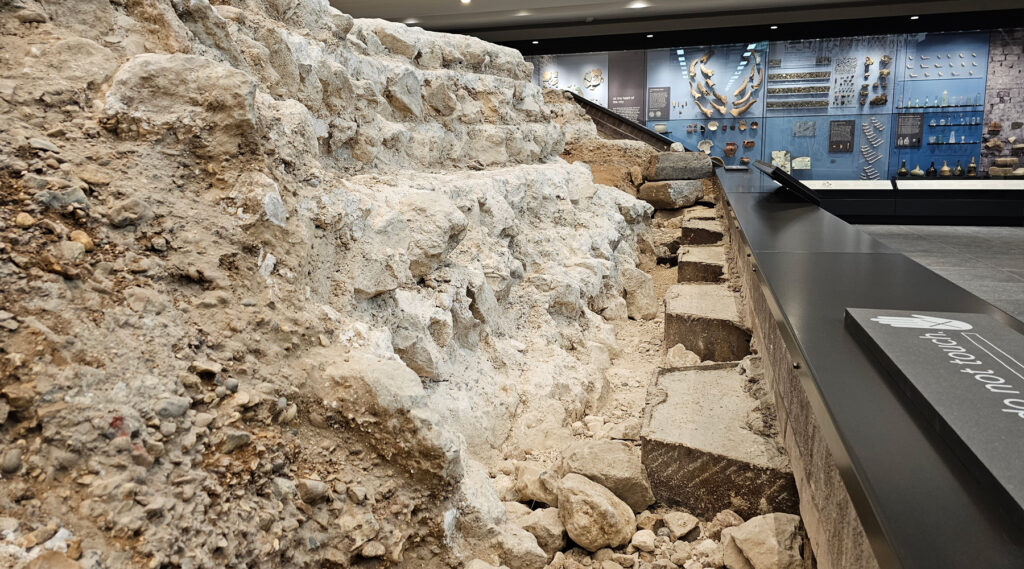
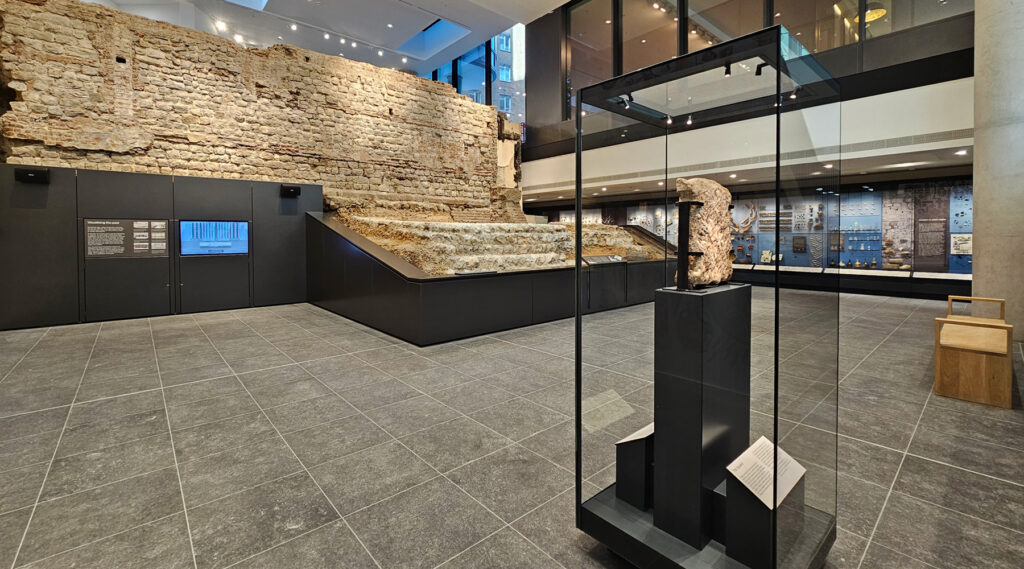
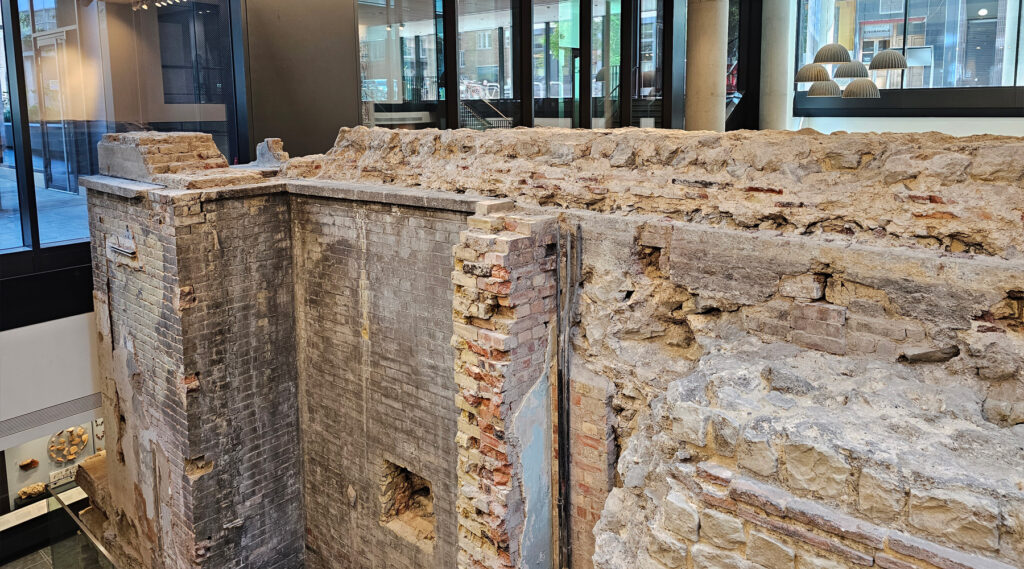
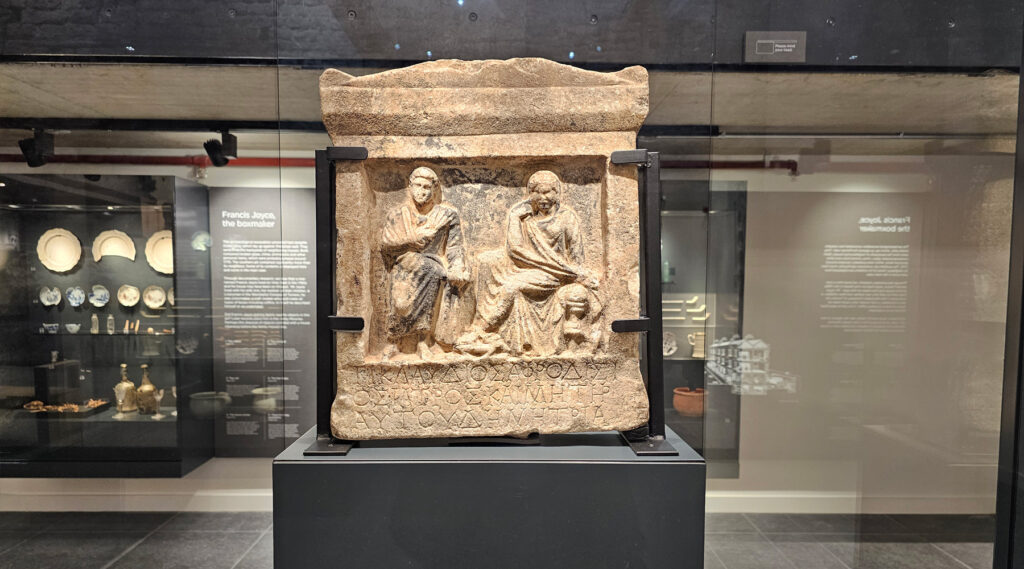
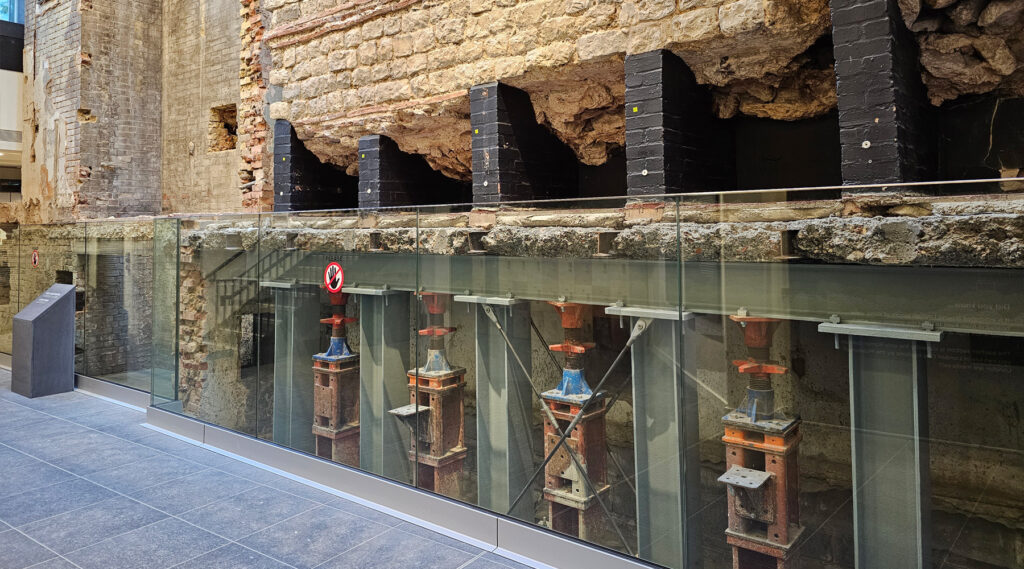






Terrific article, Ian, thank you. I had no idea!
Ian what a fantastic compilation of museums in London Not just the well known ones but all types Thank you.We could have done with this a couple of weeks ago but will be back up soon
Thank you for this article on this new Museum. Please, the Name and address in London?
Link to the museum and address in the article. Thanks
Many thanks for telling us about wonderful Roman wall. !!! Good news for historically minded and hopefully encourage business. Best wishes. Warren
love this article. Hope to someday be able to make a return visit to London and will definitely be visiting this fascinating new museum when/if I ever do manage a return visit!
How fascinating.and informative.
What a splendid site. Always well written with good photos. The overall standard is so much better than so many other sites. Thank you.
There is also Roman remains under the Guildhall art Gallery that also has the sounds of chariot fighting
Thanks a million for highlighting this new attraction. Will definitely go. Wonder if these Roman sites can link up to promote themselves together like the Mithraeum, Guildhall ampitheatre, Billingsgate baths, the pavement in the crypt of All Hallows by the Tower as well as at St Bride’s, and the barber’s in Leadenhall. Even if just a leaflet or webpage listing all the spots you can visit.
Also I wonder what is happening to the moasic floor found recently in Southwark?
I have a small piece of Roman mosaic from the site of the old London Bridge and a section of an original wooden support recovered from the substrate when the Bridge was being dismantled to go to the USA . My grandfather was overseeing the project and kept the articles.
I would be happy to donate these to a museum but have no idea who to contact ?
Maybe contact the Museum Of London or MOLA on enquiries@mola.org.uk. Maybe you should keep?!
Thank you for the article Ian. The exhibition looks extremely interesting and worth a visit. Will go there on my next trip to the UK
Good exhibition, but the admin is not working. I booked 2 days in advance, had a time slot, but when I arrived the doorbell produced first nothing, then a message saying they were out and I should call back, and finally a human voice who opened the outer door. Then no one to open the inner door until I called down several times because I could see lights. The caretaker clearly didn’t have any booking list. (And the lift wasn’t working and some of their lockers weren’t working…) I did get a reply and apology quickly when I complained the next day. Allow time and maybe wait until they know what they are doing.